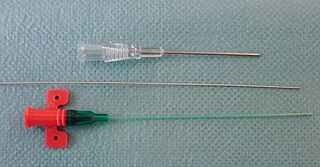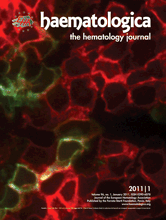Related Research Articles
In statistics, sampling bias is a bias in which a sample is collected in such a way that some members of the intended population have a lower or higher sampling probability than others. It results in a biased sample of a population in which all individuals, or instances, were not equally likely to have been selected. If this is not accounted for, results can be erroneously attributed to the phenomenon under study rather than to the method of sampling.

In mammals, the vagina is the elastic, muscular part of the female genital tract. In humans, it extends from the vestibule to the cervix. The outer vaginal opening is normally partly covered by a thin layer of mucosal tissue called the hymen. At the deep end, the cervix bulges into the vagina. The vagina allows for sexual intercourse and birth. It also channels menstrual flow, which occurs in humans and closely related primates as part of the menstrual cycle.
Sampling is the use of a subset of the population to represent the whole population or to inform about (social) processes that are meaningful beyond the particular cases, individuals or sites studied. Probability sampling, or random sampling, is a sampling technique in which the probability of getting any particular sample may be calculated. Nonprobability sampling does not meet this criterion. Nonprobability sampling techniques are not intended to be used to infer from the sample to the general population in statistical terms. Instead, for example, grounded theory can be produced through iterative nonprobability sampling until theoretical saturation is reached.

An arterial line is a thin catheter inserted into an artery.
Nursing theory is defined as "a creative and rigorous structuring of ideas that project a tentative, purposeful, and systematic view of phenomena". Through systematic inquiry, whether in nursing research or practice, nurses are able to develop knowledge relevant to improving the care of patients. Theory refers to "a coherent group of general propositions used as principles of explanation".
Lippincott Williams & Wilkins (LWW) is an imprint of the Dutch publishing conglomerate Wolters Kluwer. It was established by the acquisition of Williams & Wilkins and its merger with J.B. Lippincott Company in 1998. Under the LWW brand, Wolters Kluwer, through its Health Division, publishes scientific, technical, and medical content such as textbooks, reference works, and over 275 scientific journals. Publications are aimed at physicians, nurses, clinicians, and students.

Nezelof syndrome is an autosomal recessive congenital immunodeficiency condition due to underdevelopment of the thymus. The defect is a type of purine nucleoside phosphorylase deficiency with inactive phosphorylase, this results in an accumulation of deoxy-GTP which inhibits ribonucleotide reductase. Ribonucleotide reductase catalyzes the formation of deoxyribonucleotides from ribonucleotides, thus, DNA replication is inhibited.
The New York University Rory Meyers College of Nursing offers undergraduate and graduate programs in nursing and clinical experience.
Stratification of clinical trials is the partitioning of subjects and results by a factor other than the treatment given.
An androgen-dependent condition, disease, disorder, or syndrome, is a medical condition that is, in part or full, dependent on, or is sensitive to, the presence of androgenic activity in the body.
A chemical restraint is a form of medical restraint in which a drug is used to restrict the freedom or movement of a patient or in some cases to sedate the patient. Chemical restraint is used in emergency, acute, and psychiatric settings to reduce agitation, aggression or violent behaviours; it may also be used to control or punish unruly behaviours. Chemical restraint is also referred to as a "Psychopharmacologic Agent", "Psychotropic Drug" or "Therapeutic Restraints" in certain legal writing.

Haematologica is a monthly, peer reviewed, scientific journal, published by the Ferrata Storti Foundation. The Editor in Chief is Dr. Jacob M. Rowe. The focus of Haematologica is all topics related to experimental and clinical hematology, which results in a multidisciplinary scope. The National Library of Medicine ID number is 0417435.

J. B. Lippincott & Co. was an American publishing house founded in Philadelphia, Pennsylvania in 1836 by Joshua Ballinger Lippincott. It was incorporated in 1885 as J. B. Lippincott Company.

The American Journal of Nursing (AJN) is a monthly peer-reviewed nursing journal established in 1900. As of 2021 the editor-in-chief was Maureen Shawn Kennedy and it is published by Lippincott Williams & Wilkins. In 2009 the journal was selected as one of the "100 Most Influential Journals in Biology and Medicine in the Last 100 Years" by the Biomedical and Life Sciences Division of the Special Libraries Association.
An estrogen-dependent condition, disease, disorder, or syndrome, is a medical condition that is, in part or full, dependent on, or is sensitive to, the presence of estrogenic activity in the body.

Breast atrophy is the normal or spontaneous atrophy or shrinkage of the breasts.
Arm recoil is a neurological examination of neonate for detecting the muscle tone.
Assisting in activities of daily living (ADL) are skills required in nursing and other professions such as nursing assistants.
Convenience sampling is a type of non-probability sampling that involves the sample being drawn from that part of the population that is close to hand. This type of sampling is most useful for pilot testing.
Paul Edward Rolan is an Australian physician, medical researcher, academic, and public health advocate. He specializes in the management of chronic pain and headache, and development of novel treatments.
References
- ↑ Suresh, Sharma (2014). Nursing Research and Statistics. Elsevier Health Sciences. p. 224. ISBN 9788131237861 . Retrieved 29 September 2017.
- 1 2 Schuster, Daniel P.; Powers (MD.), William J. (2005). Translational and Experimental Clinical Research. Lippincott Williams & Wilkins. p. 46. ISBN 9780781755658 . Retrieved 29 September 2017.
- ↑ Bowers, David; House, Allan; Owens, David H. (2011). Getting Started in Health Research. John Wiley & Sons. ISBN 9781118292969 . Retrieved 29 September 2017.
- ↑ Broeck, Jan Van den; Brestoff, Jonathan R. (2013). Epidemiology: Principles and Practical Guidelines. Springer Science & Business Media. pp. 178–179. ISBN 9789400759893 . Retrieved 29 September 2017.
- ↑ Polit, Denise F.; Beck, Cheryl Tatano (2010). Essentials of Nursing Research: Appraising Evidence for Nursing Practice. Lippincott Williams & Wilkins. pp. 311–312. ISBN 9781609130046 . Retrieved 29 September 2017.
- ↑ Indrayan, Abhaya; Holt, Martin P. (2016). Concise Encyclopedia of Biostatistics for Medical Professionals. CRC Press. ISBN 9781315355573 . Retrieved 29 September 2017.